Throw Blends Nostalgia with Concern
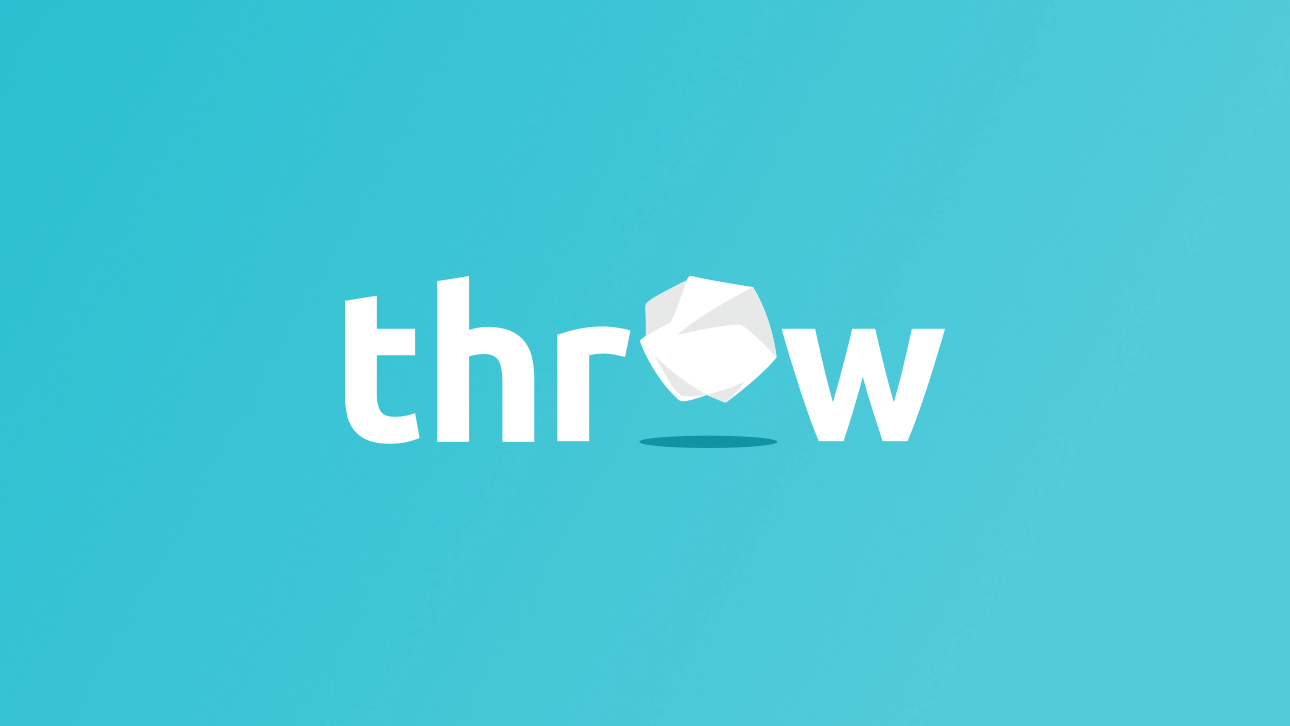
A few days ago, I saw an ad for an app called “Throw,” which touts itself as “a new app perfect for anonymous and constructive feedback” and “a query marketplace free from any social agenda.” The ad harkened back to the age of Q&A websites and the value they brought, which was enough for me in the moment to download the app. As someone who probably spent a little too much time on Yahoo Answers and similar sites, seeing this ad made me realize that there aren’t many Q&A websites quite like the sites of the past, and I missed the joy they brought me. Despite this, my time with Throw was short-lived, as I quickly found that it was not the “query marketplace” I hoped it might be.
I don’t want to condemn the Throw team for trying to build a Q&A app reminiscent of the old Q&A websites; I think the concept is solid. There’s a reason why Yahoo Answers was as popular as it was, after all. Despite this, I found a lot about the Throw app that raised orange and red flags in my mind, particularly after a few days of use, and I feel like they should be discussed.
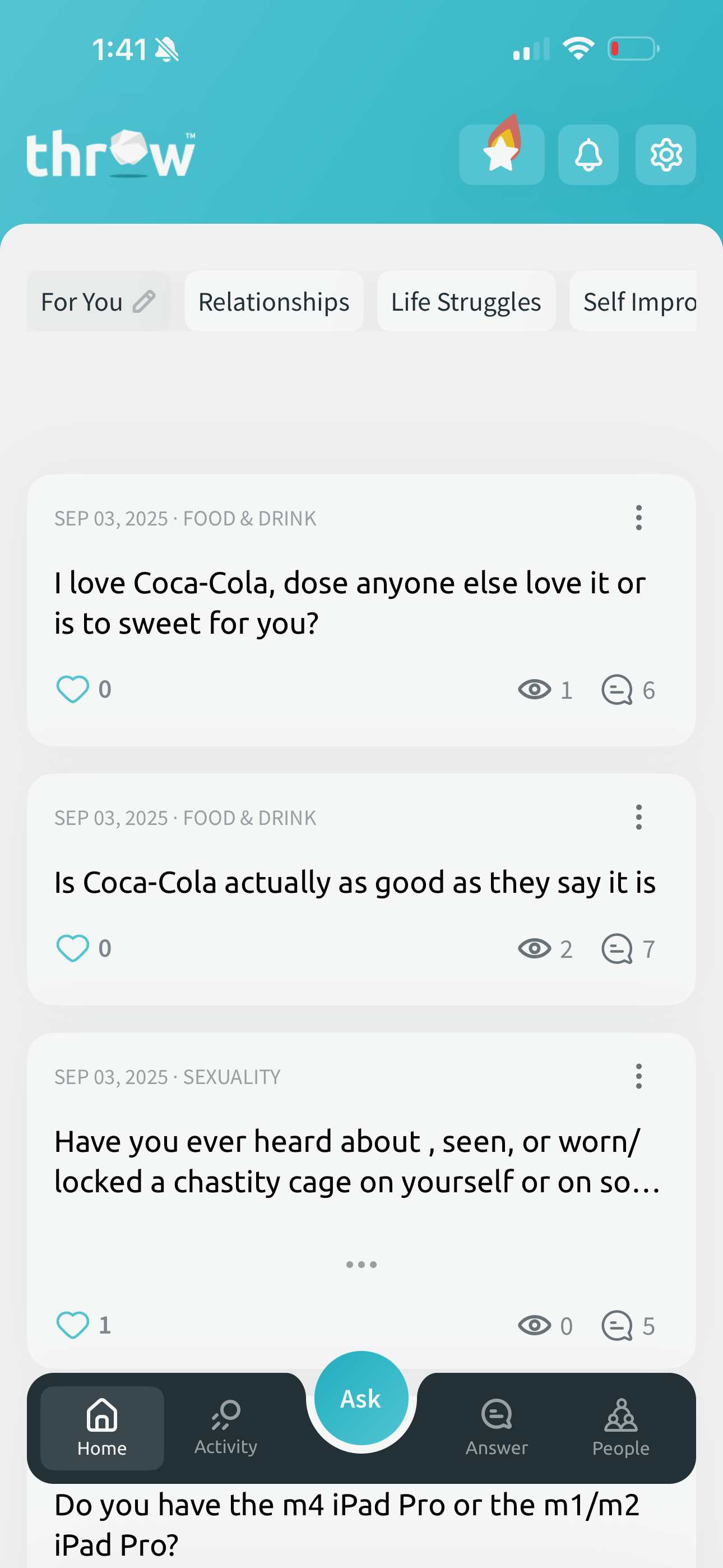
The Good⌗
As I mentioned, the concept of the Throw app is good. The app wants to be a place where people can ask and answer questions submitted by users like them, providing honest feedback on a wide variety of topics. At the end of the day, the app accomplishes that goal. The interface is relatively simple to use and the amount of time it takes to post and answer questions is minimal. The app also encourages users to answer questions (or to “Catch” what other users have “thrown”), which feels like a well-intentioned bid to ensure that questions posted by users get at least a couple answers. The user interface itself reminds me of apps from the early 2010s in its design, which might evoke some sense of nostalgia for those who used similar apps from that time. The app also has a reputation system of sorts, in which users receive scores based on their activity in the app (seemingly with a focus on encouraging users to submit questions and answers, and especially those of quality). The app seems to try to balance quantity and quality as well by eluding to the scoring system incorporating a way to penalize users for submitting problematic, offensive, or low quality content. Again, the concept is decent.
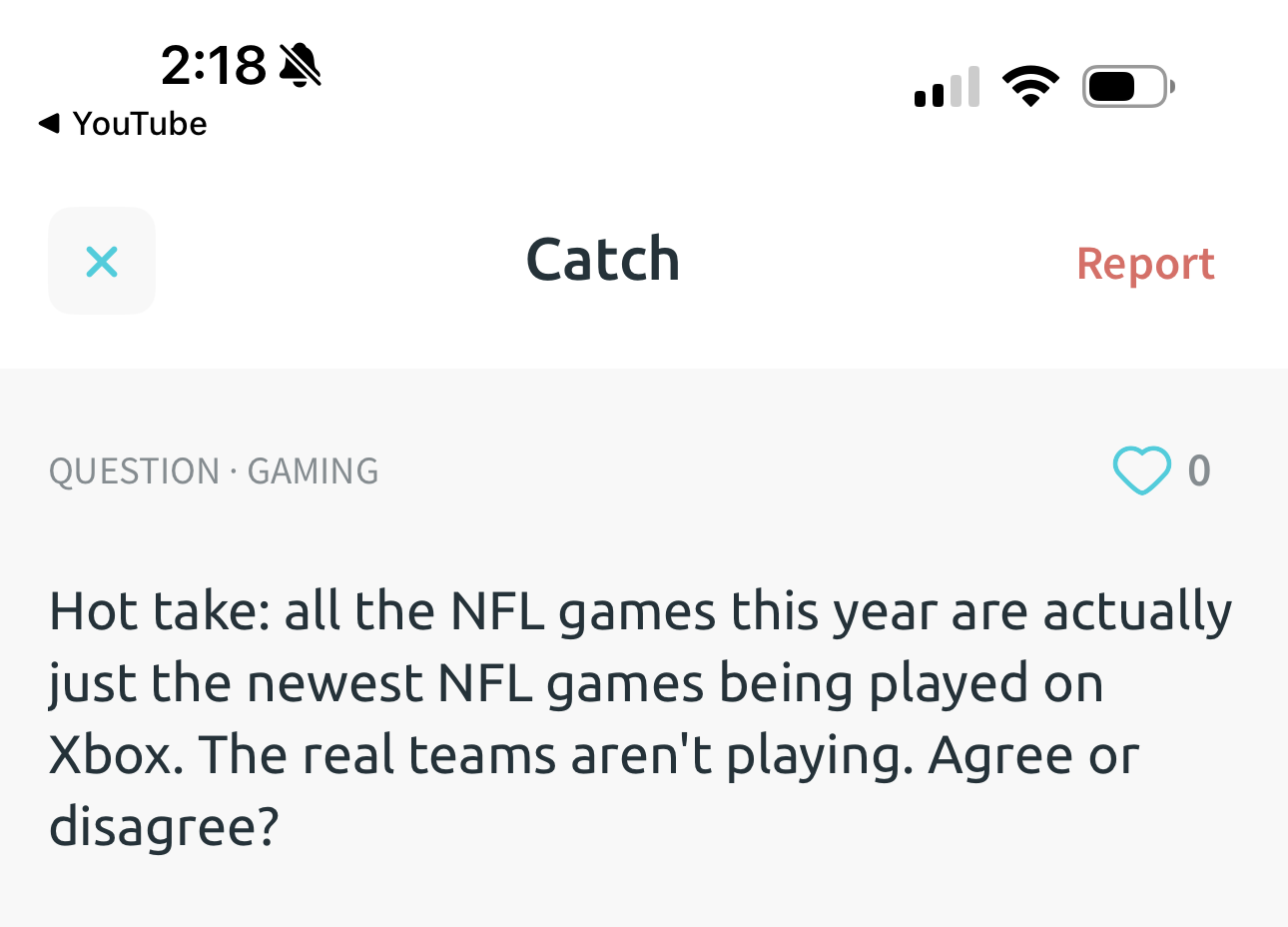
The Bad⌗
Where Throw starts to fall apart is with how it attempts to manage the user-submitted content that it depends on. For context, part of the app’s marketing references that it has “rigorous content moderation protocols to filter out the bad,” which (at least to me) suggests that there is some kind of active filtering or content moderation happening behind the scenes to prevent certain types of content from being shared. Instead, users are provided with a “Report” button on throws (questions) and catches (answers), which then seems to hide reported content for at least some users while the content is queued up for other users to voice their opinion on whether the content is actually report-worthy. It’s unclear whether the Throw team actually receives or reviews reported content themselves (and I’m somewhat doubtful that they do based on my experience).
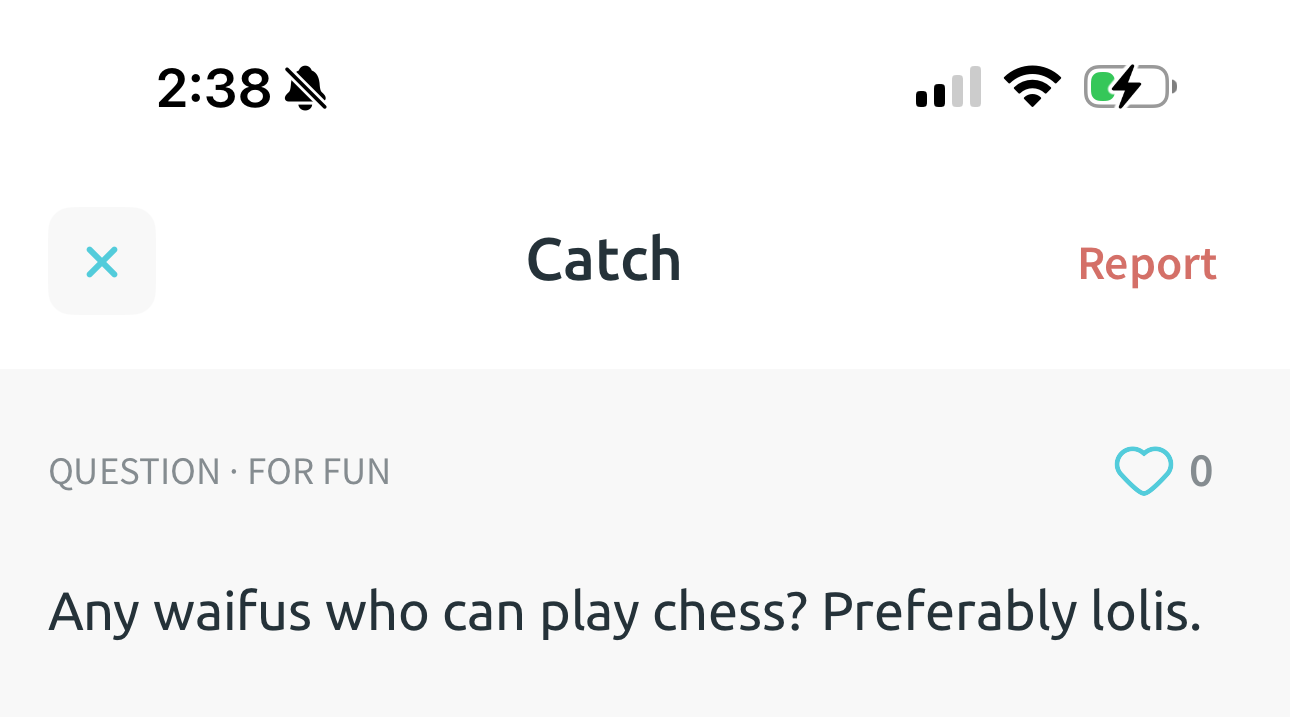
The concept of delegating content moderation to an app’s userbase is interesting, but I’d argue that it’s also problematic. On one hand, it provides the users the opportunity to decide what is or is not appropriate for the platform, which feels like a platonic ideal. After all, there are a lot of subjects that people might have questions about, and sometimes those subjects fall in the realm of taboos or other topics that you might not discuss with strangers or beyond closed doors. It creates room for the users to welcome the tough or unconventional questions and answers while also letting users set boundaries. On the flip side, this thinking assumes that those questions and answers are submitted with good intentions, not to mention that the content is actually a question or answer. Sadly, that assumption can’t be made about the Throw userbase; there are several examples of users with bad intentions that I encountered in the short time I used the app. For example, I found multiple transphobic responses to questions about transgender issues, racism, and one user who seemed to be set on responding to every question with the first paragraph of the Wikipedia article on pandas. In addition, I saw several throws that were either statements (not questions) or solicitations for dating or other “personal connections.” Thankfully, I didn’t see worse, but I’ll talk about that in the next section.
Another thing that led me to leave Throw is the amount of content available. Over the course of three days, I didn’t see more than maybe six new throws posted. This made it hard to stay engaged, especially after I took some time on my first day with the app to explore the questions available (and share an answer for most of them). In the latter part of my tenure as a Throw user, I became intimately familiar with the questions already out there, such that I could nearly recite them in order. I recognize that it’s hard for apps that depend on user-generated content to get off the ground, but it seems like this might be a long-standing issue. I found artifacts both in the app and outside the app that indicate that it’s been around since at least 2023, leaving two years to build up a community of people asking and answering questions. This left me concerned about the viability of the platform long-term and unmotivated to keep checking for new throws.
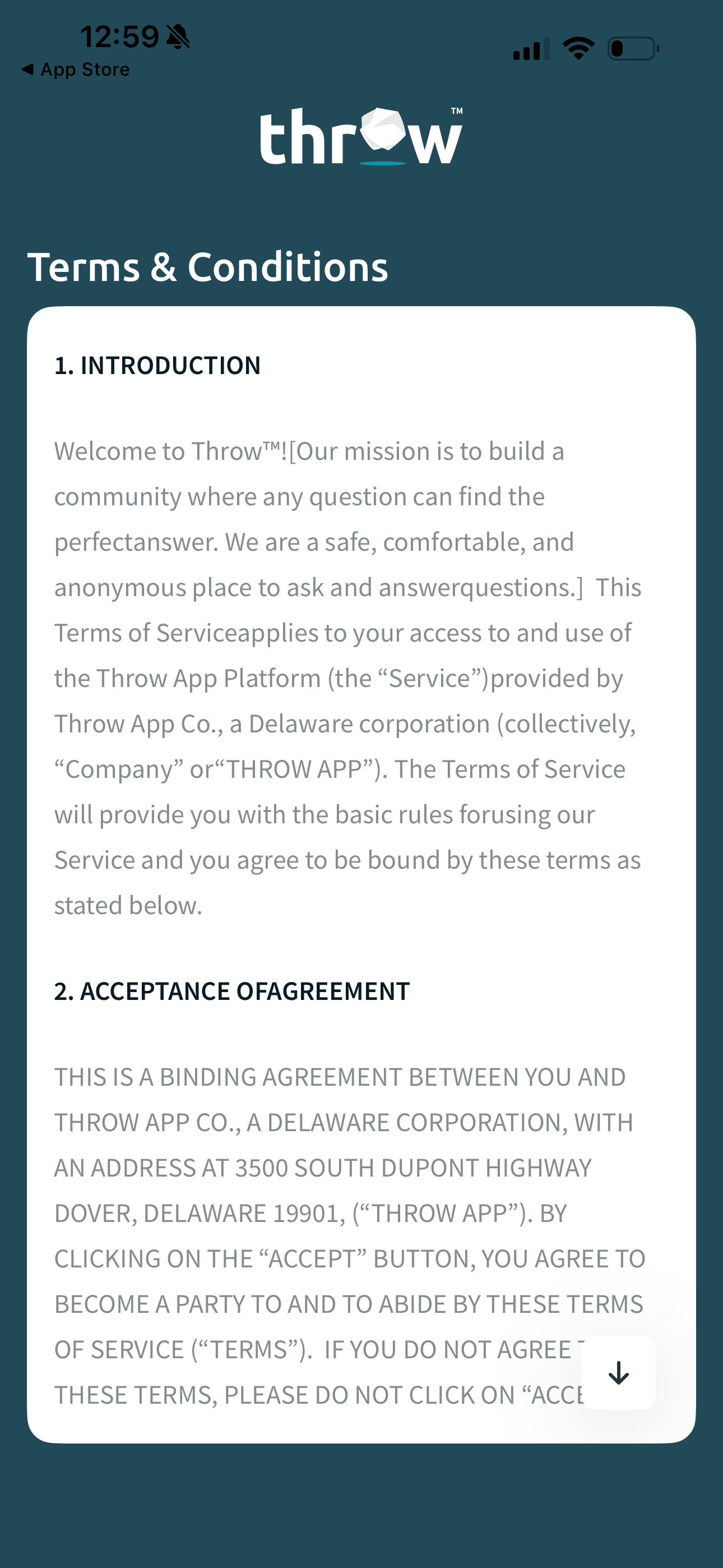
A third item which left a bad taste in my mouth was how the terms and conditions for using the app were documented. This was actually the first thing that made me feel like something was “off” about Throw. Most notably, the way that certain words were combined (when they should’ve had spaces separating them) and how the text contained formatting syntax that wasn’t meant to be shown to the user made me wonder how much thought or care was put into the app. It made me wonder if a lawyer had even reviewed the copy to ensure it can hold up in court, or if the development team simply grabbed boilerplate T&Cs, replaced any placeholders as needed, and threw them into the app without much thought. In hindsight, I probably should’ve turned away at this point.
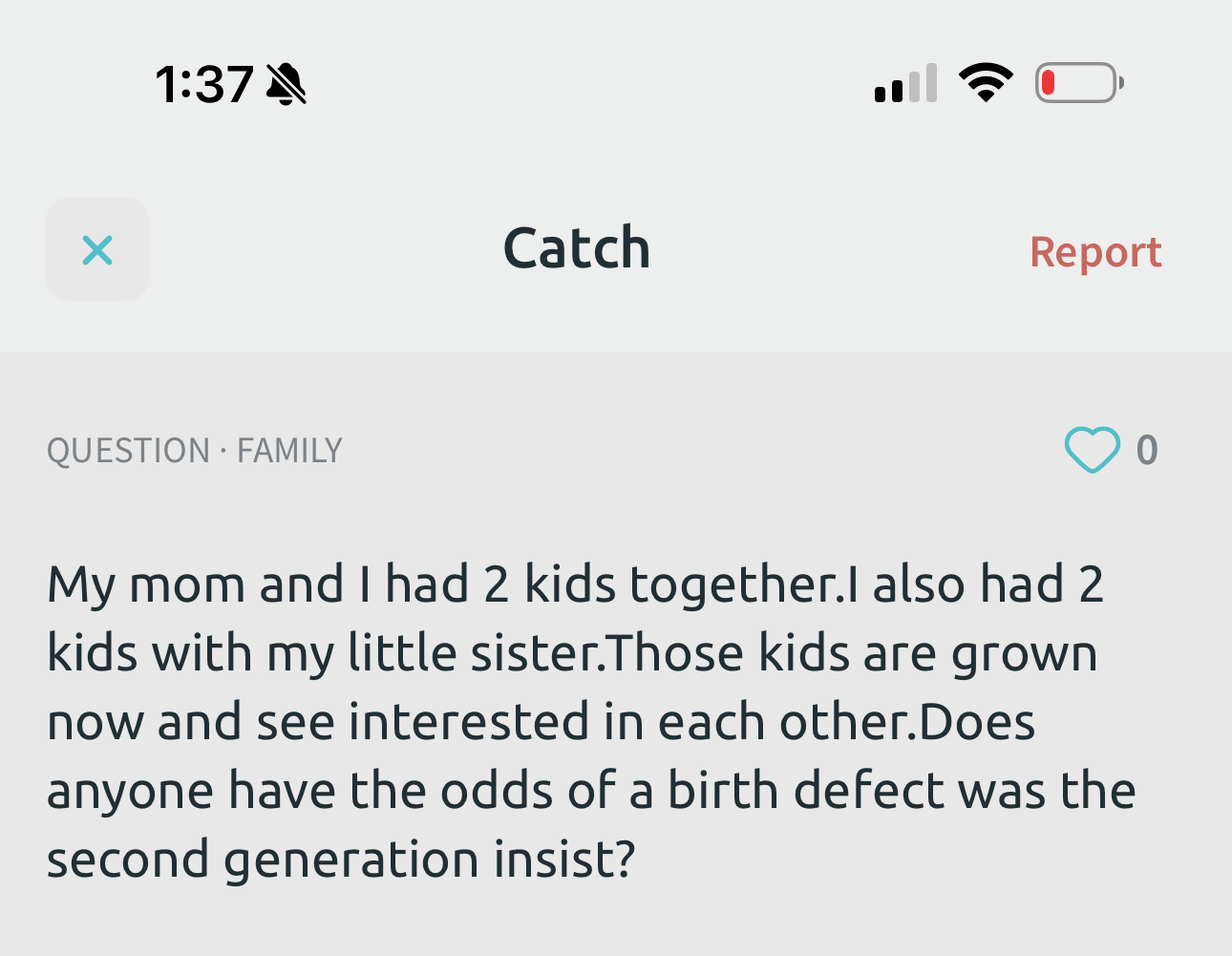
The Ugly⌗
Jumping back to the subject of content moderation in Throw, one thing in particular stood out and left me gravely concerned for the safety and longevity of the platform: how “bad” content is handled. In this context, “bad” content is content which should be reported; content that is offensive, problematic, harmful, or generally off-topic or low quality. Over my three days as a Throw user, I found that content that I reported never left the feed of questions and answers. Rather, there was a content warning which I had to dismiss to see the content, but it was still generally present. It’s unclear whether that content warning is shown to users other than those who reported it. This is one thing that makes me think that the Throw team doesn’t do much content moderation themselves.
The other thing (and perhaps the more damning thing) is how I would attempt to report some “bad” content and receive a message from the app indicating that the content had already been reported. If the content I’m being shown is already in question, why present it to other users and possibly increase the potential that the content has to cause harm? This was made even worse by seeing the same content be recommended to me over and over. Thankfully, nothing that I was shown was terribly upsetting or harmful, but I’d worry about what would happen if someone with malicious intent were to upload something truly vile, like CSAM or gore. This behavior only worsened my feeling that the Throw team doesn’t moderate content themselves and was one of the driving forces leading me to delete my account.
Closing Thoughts⌗
While the concept behind Throw sets the app up for success, there’s a lot about how this particular implementation works that drove me away from it. In its current form, Throw feels like it’s destined to fail, both from the disappointing level of new content day to day and the potential issues that come from its lacking content moderation systems. I want an app like Throw in my life, but Throw would have to grow and change a lot before I’d consider rejoining it.